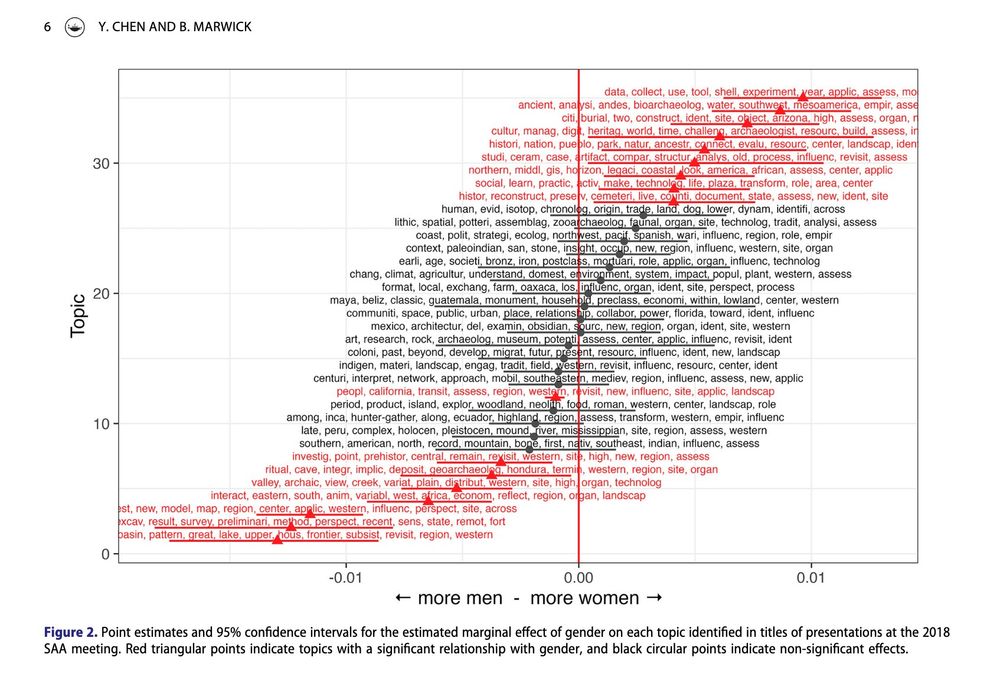This is based on my year of reproducibility reviews for the J. of Archaeological Science:
authors.elsevier.com/a/1lHjN_6yUM... 🧪🏺
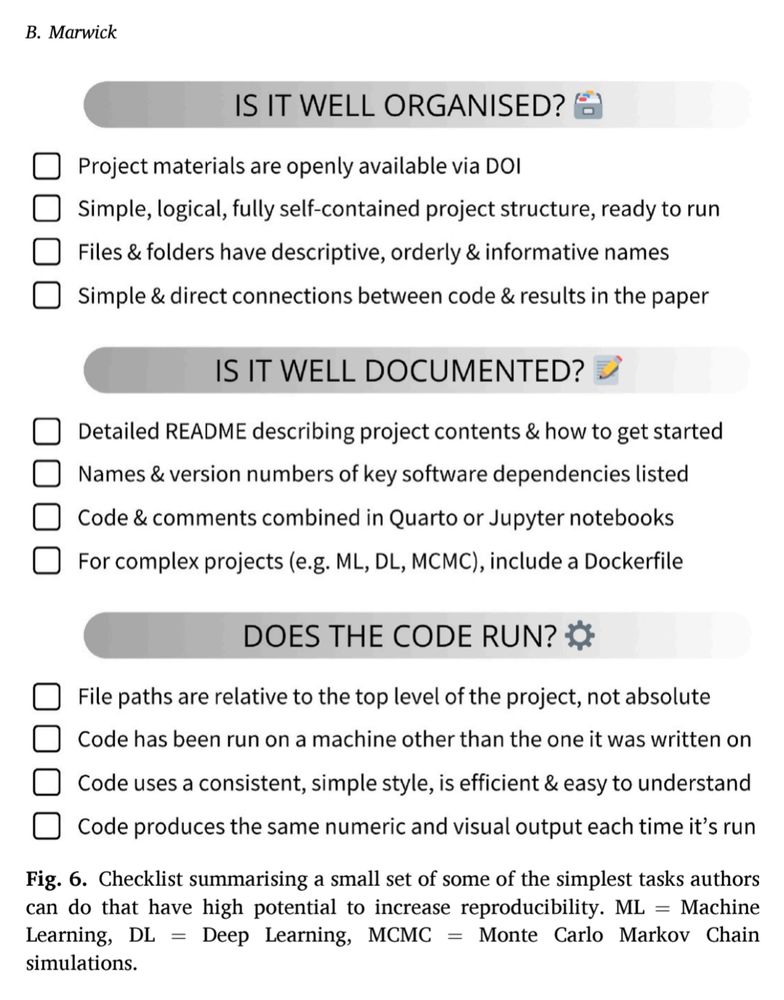
This is based on my year of reproducibility reviews for the J. of Archaeological Science:
authors.elsevier.com/a/1lHjN_6yUM... 🧪🏺
Here's my new paper that has a go at answering this question by analysing 10,000 journal articles:
authors.elsevier.com/a/1lHjN_6yUM...




Here's my new paper that has a go at answering this question by analysing 10,000 journal articles:
authors.elsevier.com/a/1lHjN_6yUM...
onlinelibrary.wiley.com/page/journal...
Lots of best practices and specific tips for increasing the quality, usefulness & impact of papers
🧪




onlinelibrary.wiley.com/page/journal...
Lots of best practices and specific tips for increasing the quality, usefulness & impact of papers
🧪
Ruan, Q. et al. (2025) Quina lithic technology indicates diverse Late Pleistocene human dynamics in East Asia doi.org/10.1073/pnas...
🆓 faculty.washington.edu/bmarwick/PDF...
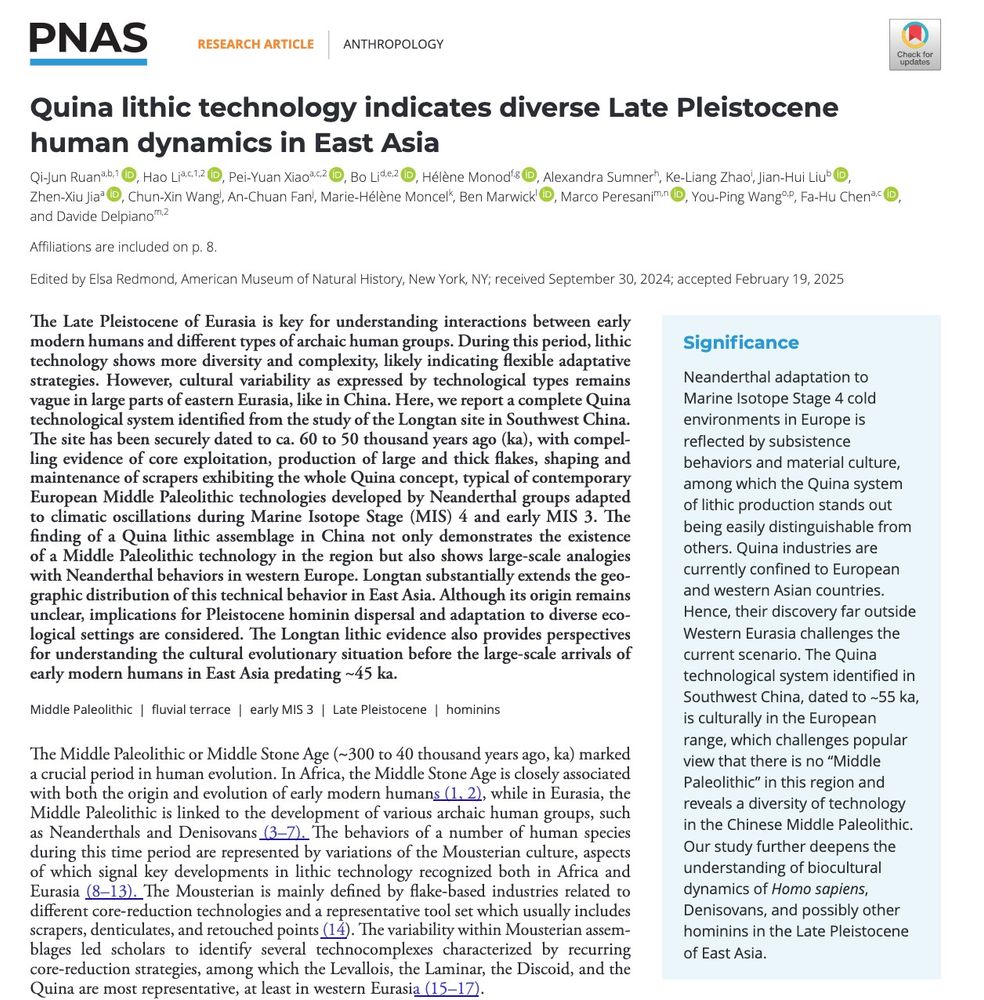
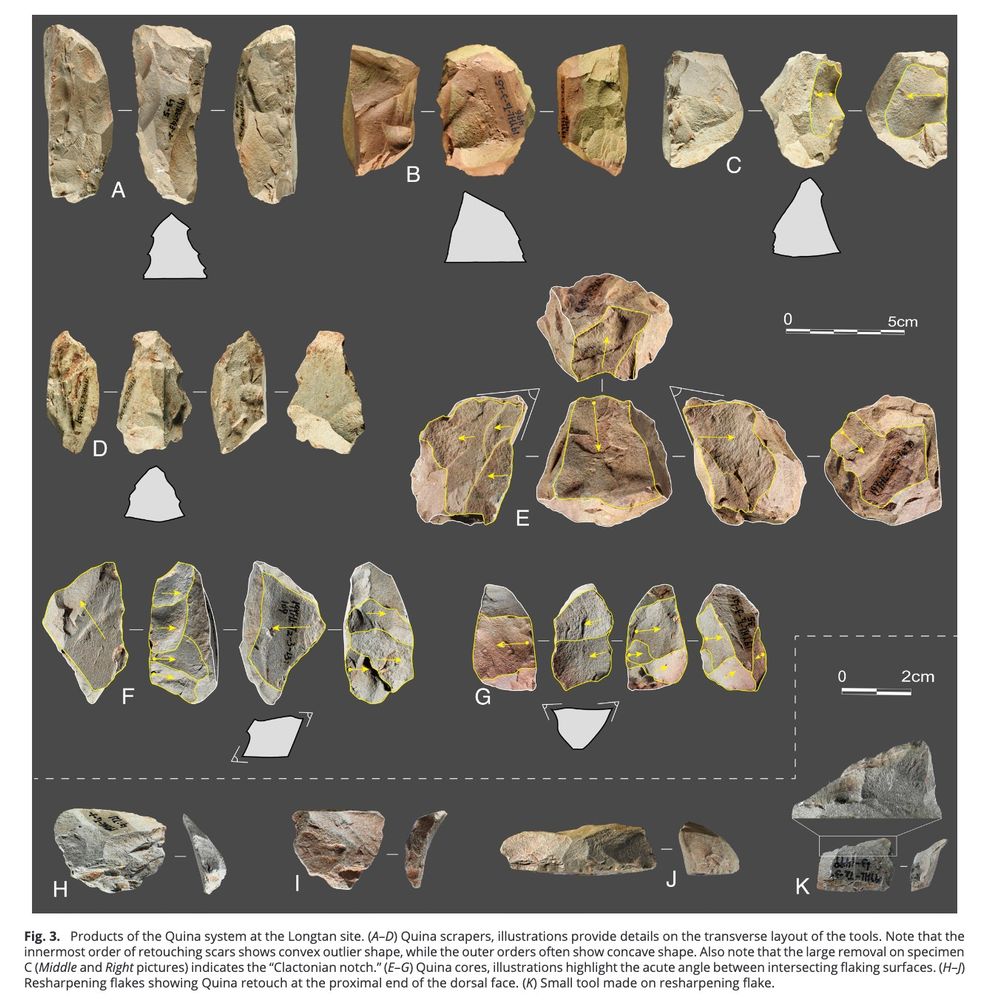
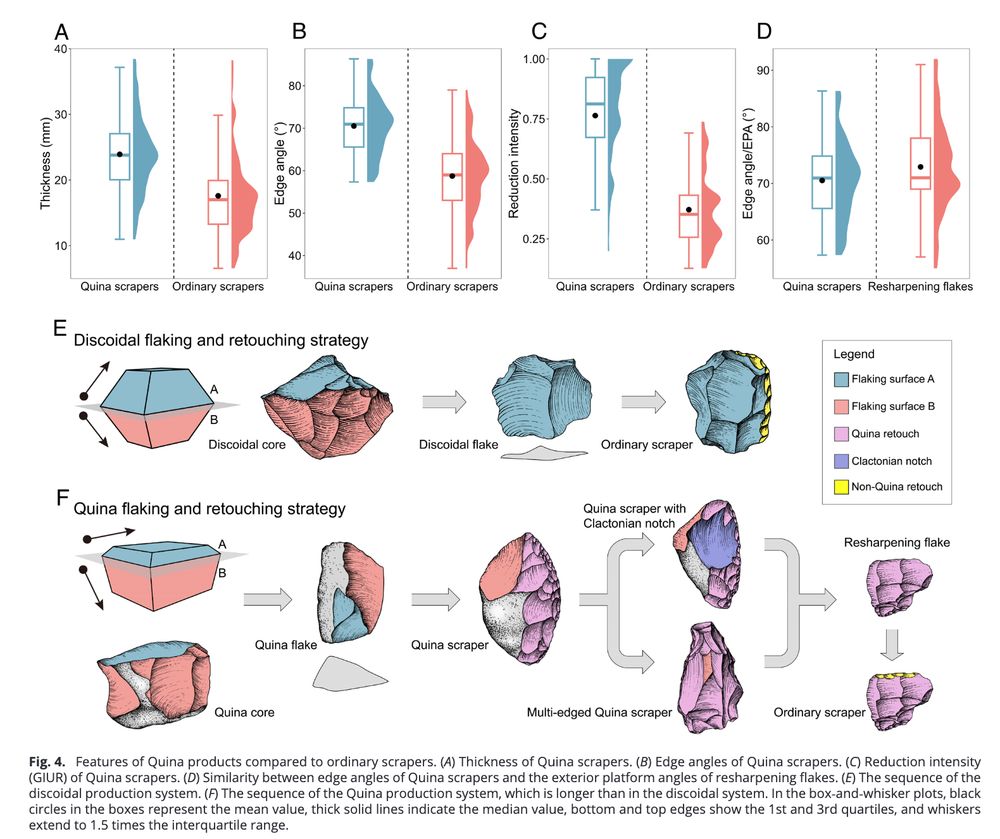

Ruan, Q. et al. (2025) Quina lithic technology indicates diverse Late Pleistocene human dynamics in East Asia doi.org/10.1073/pnas...
🆓 faculty.washington.edu/bmarwick/PDF...
www.cambridge.org/core/journal... 🧪




www.cambridge.org/core/journal... 🧪

Making your computational results reproducible is critical for ensuring transparency, reliability and reusability 🧪

Making your computational results reproducible is critical for ensuring transparency, reliability and reusability 🧪

"New Evidence of Human Occupation in Southwest China Since 44,800 Years ago"

"New Evidence of Human Occupation in Southwest China Since 44,800 Years ago"
This initiative contributes to making archaeology more transparent and accessible and a source of trustworthy and reliable information about the human past.


This initiative contributes to making archaeology more transparent and accessible and a source of trustworthy and reliable information about the human past.
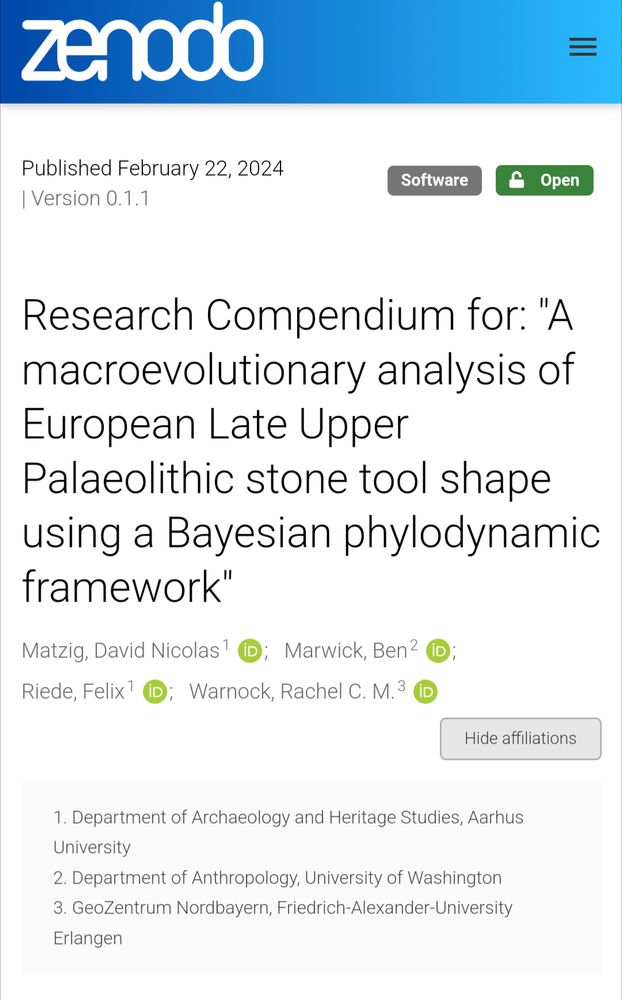
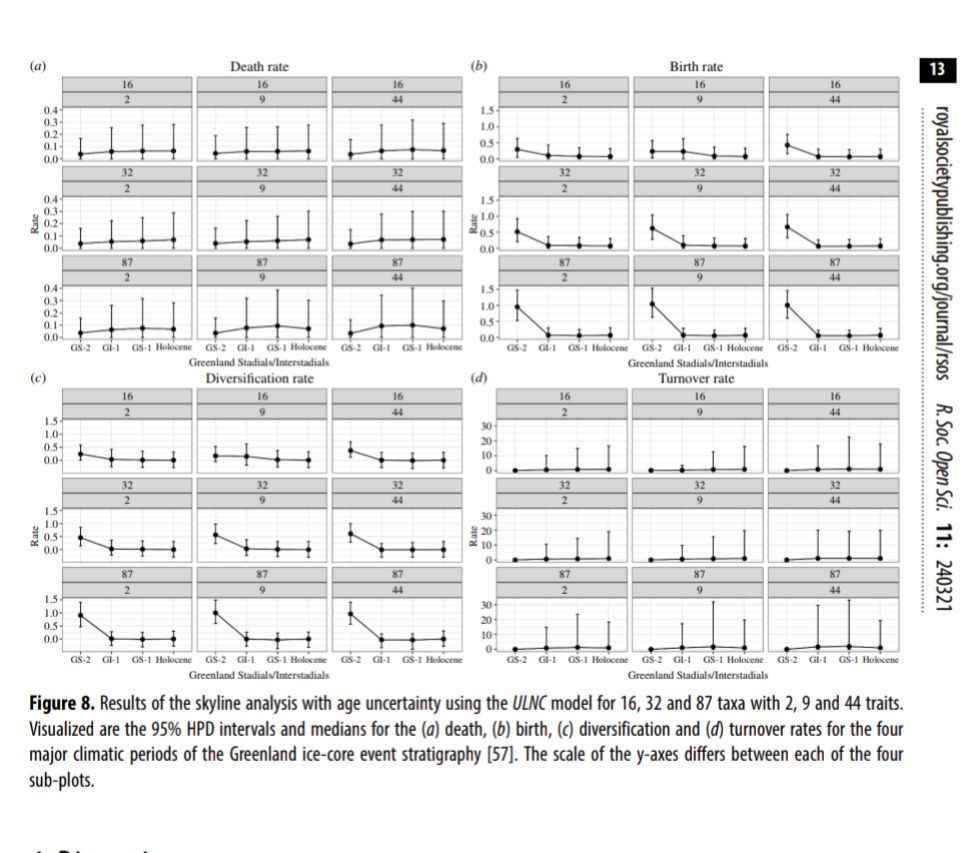


doi.org/10.1098/rsos...

doi.org/10.1098/rsos...
DiCiro, A., Mitchell, N., & Marwick, B. (2024). Everything is a Deposit: An Interview with Pioneering Geoarchaeologist Julie K. Stein. Bulletin of the History of Archaeology, 34(1), 15. doi.org/10.5334/bha-...

DiCiro, A., Mitchell, N., & Marwick, B. (2024). Everything is a Deposit: An Interview with Pioneering Geoarchaeologist Julie K. Stein. Bulletin of the History of Archaeology, 34(1), 15. doi.org/10.5334/bha-...
It was presented today at #SAA2024 #saa2024nola by
#UniversityOfWashington undergrad Anne Poole. Co-authors include Ailin Zhang, Setareh Shafizadeh & Jess Beck.
Data & #rstats code at github.com/benmarwick/a...

It was presented today at #SAA2024 #saa2024nola by
#UniversityOfWashington undergrad Anne Poole. Co-authors include Ailin Zhang, Setareh Shafizadeh & Jess Beck.
Data & #rstats code at github.com/benmarwick/a...
www.sciencedirect.com/journal/jour...

www.sciencedirect.com/journal/jour...






